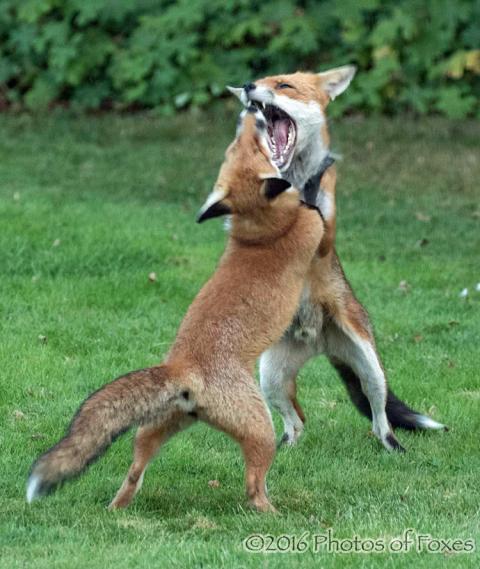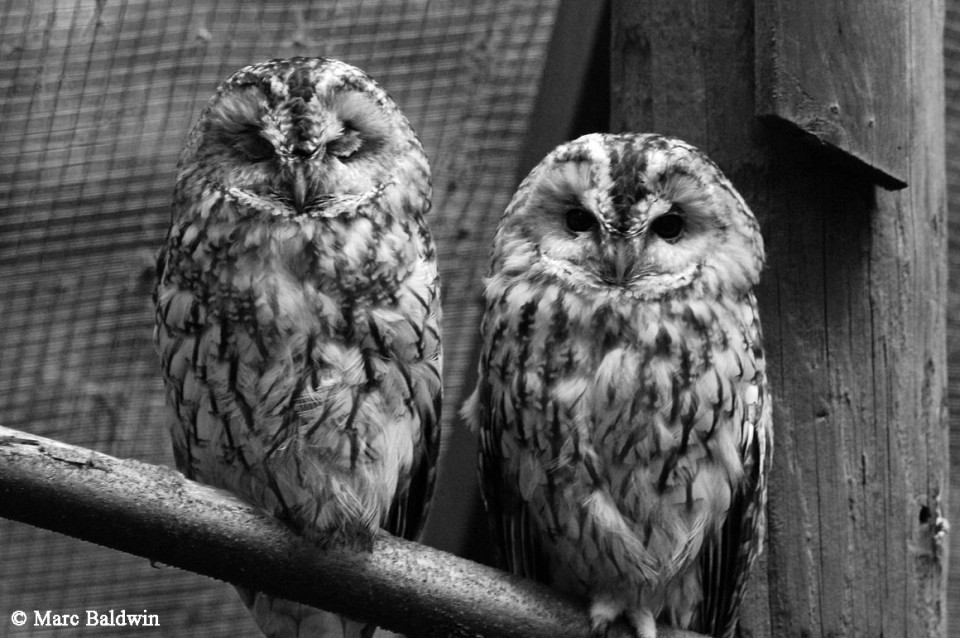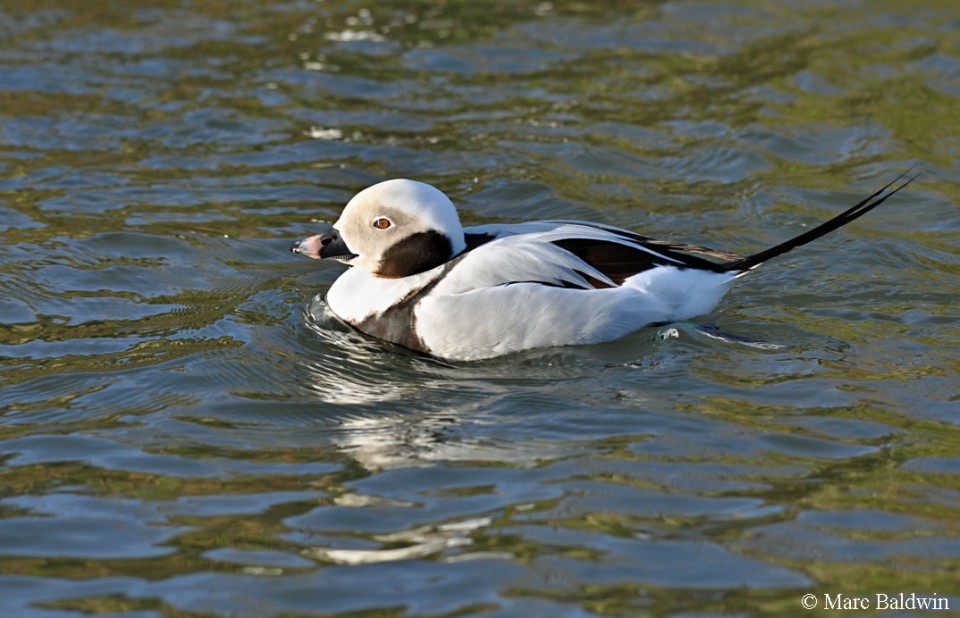Mammals

The fox breeding season peaks after Christmas, continuing into January. This is a good time to look for foxes as they’re often abroad during the day in pairs, the dog following the vixen waiting for her to come into oestrus. Once the dominant vixen has been mated and is no longer in oestrus, the dog fox will begin ranging further, looking for other receptive females on neighbouring territories; at the same time, un-mated vixens spend more time on the periphery of their territories and call more to attract potential suitors. All this fluidity in fox society makes January the peak month for foxes fighting and being run over, as foxes trespass on each others’ territories and range widely in search of mates. The combination of more interaction and a lack of vegetation to muffle the noise means that January is often the month people find out they have foxes in their neighbourhood.
The Chinese water deer rut peaks during December, but may spill over into January, particularly if late December is mild. This small deer is a native of China and Korea that started appearing in our countryside during the early 1940s following escapes from captivity. Males “chirrup” at the females while chasing them and strut around “squeaking” and posturing to impress the does. Fights are rarely witnessed but can be violent, with bucks dancing around trying to slash each other with their tusks. Bucks can frequently be seen sporting gashes on their rumps, patches of missing fur, torn ears and even gouged eyes as rutting activity intensifies.
In common with foxes and water deer, squirrels are also stepping up their activity now. As we enter their breeding season, they can be seen chasing each other through the treetops in parks, gardens and woods. Several males may hound a single female as the group career through the treetops, up and down tree trunks and across lawns.

January is a good month to look for some of our small mammals, particularly voles and mice. Sit patiently in most woodlands and it won’t be long before a rustling in the leaf litter catches your attention, most likely evidence of a bank vole going about its daily chores. Parting long tussocky grass in fields will often reveal a network of trails punctuated with holes leading into the underground homesteads of these rodents. Each resident pair of voles habitually defend and patrol their runs during the breeding season, with territories marked with piles of small pellet-shaped droppings (latrines). In winter, though, just finding enough food takes priority over sex, and the voles become more tolerant of one another, allowing them to live at higher densities.
If it snows, most of the small mammals will continue their activities under the ‘blanket’, but wood mice will often travel above it – their tracks look like those of a miniature kangaroo as they bounce across the crust. Water voles can also be seen out and about, although they’re very much fair weather mammals so you stand more chance of finding one if you wait for a bit of late winter sunshine. Overall, water voles are less active during the winter months, and may be displaced into nearby fields when river levels rise after periods of heavy rain.
Finally, very mild or very cold periods during the winter can cause hedgehogs to rouse from hibernation and go in search of food and water. Contrary to popular misconception, it is not that uncommon to see hedgehogs during the winter, but small individuals are often in need of veterinary attention. Check out my Helping Hedgehogs article for more information and advice. With hedgehogs in mind, please take extra care if you plan to burn any garden waste this month, as piles of branches, grass and other cuttings offer a good nesting and/or hibernation spot. Please check any bonfires for hedgehogs before lighting or, better still, build your bonfire on the day you plan to light it.
Birds
You may find that your bird feeders are particularly busy at this time of year. As natural food becomes harder to find, garden birds are attracted to feeders, particularly during cold and/or snowy weather. With the prey come predators, and sparrowhawks are common garden visitors during January as they hunt around bird tables and feeders. Indeed, January is a good month for bird of prey watching more generally, with hen harriers, marsh harriers, buzzards, peregrines and owls being evident.
Tawny owls are pair-bonding and there is much calling (see December for audio clips) and fighting going on as the pair establishes a territory and defends it from others. The male brings in food to fatten up the female and increase her body condition for egg laying, while the female judges how good a provider the male will be for her chicks according to the food he brings back. When it’s damp and blustery the owls are understandably reluctant to move and can be observed more easily. Long-eared owls are, I’m reliably informed, easier to see this month because there is less foliage to obscure them, although if you have a lot of tawnies in your neighbourhood you’re less likely to have long-eareds.

There are still some large murmurations of starlings to be seen, and January is good for bird watching by the coast. Our estuaries are still busy with waders (oystercatchers, knott, dunlin, egrets, sandpipers and sanderlings particularly), many of which will move in “super-organism” flocks almost as impressive as the starlings – particularly knott and dunlin. We now have a pretty good idea what causes the rapid twisting and turning behaviour of murmurations (see December), but why do birds flock in this manner in the first place?
Safety in numbers is part of the equation, with an average dunlin flock having two thousand eyeballs peeled for sparrowhawks, merlins and peregrines. This increased look-out potential means that feeding efficiency is improved because any given bird can spend more time eating and less watching out for danger. The conservation of body heat is also an important benefit of flocking together and the smaller the species the more important this becomes as, all else being equal, small objects lose heat more quickly than larger ones. Perhaps the most overlooked aspect of flocking, however, is communication. We now think that birds exchange information on where the good feeding sites are at these communal roosts, and some studies certainly suggest that birds may follow those individuals in the flock that foraged successfully the previous day when they set out the next morning.
Swans, ducks, and species such as long-tailed ducks, guillemots, red-throated divers and large rafts of great-crested grebes can be found around our coastline this month, while our woodlands and farmland are playing host to large mixed flocks of finches, with the odd brambling amongst the chaffinches, and thrushes including redwing and fieldfare. Pine forests are worth a visit to look for crossbills and hawfinch, both of which are active now.

Herons are frequent visitors to ponds, lakes, rivers and even flooded fields where their opportunistic nature becomes apparent as they eat everything from frogs to water voles. Their breeding season is fast approaching and if the weather is mild - frozen waterways inhibit their ability to feed - there will be much calling and nest re-building at nest sites up and down the country come the end of the month.
Reptiles and amphibians
If the weather remains cold, it’s unlikely there will be much activity from our reptiles or amphibians. During milder interludes, particularly towards the end of the month, we may see some early frogspawn and even some snakes or lizards out basking in sunny spots. Wall lizards are well-known to be active along the south coast during the winter, as long as there are a few patches of sun to be found, and there are occasional reports of adders out basking in the December sunshine, so it always pays to check.
Invertebrates
The spiders living on the outside walls of our houses may still be relatively active. Mild winters may result in the appearance of small flies, and wet conditions can tempt out earthworms. Generally speaking, late winter is a period with little invertebrate activity but a rummage among the leaf litter or under logs this month is likely to turn up the orange-jawed woodlouse spider and plenty of its prey, as well as various carrion and ground beetles. Of particular note this month are Devil’s coach-horse beetles, large black beetles that raise their tails up in a manner not unlike that of a scorpion when threatened, and the long-snouted buzzing snail-hunter, a type of ground beetle that buzzes when you pick it up.

Plants and fungi
January is a good month to look for some of Britain’s 1,500 species of lichens, obligate symbioses of algae and fungi in which the fungi provide protection in return for a steady supply of carbohydrates and nitrates, and some of our lesser-known fern species, including the common polypody, hart’s tongue and the aptly-named hard fern. Mistletoe (see December) and butcher’s broom, the latter named for its historic use by butchers to sweep their chopping boards, are around now, as is the vanilla-scented winter heliotrope, a widely distributed plant whose purple spiky flowers bloom in damp habitats during January, and snowdrops towards the end of the month. Fungi-wise, many of the autumn fruiting bodies are now past their best, but smaller coral spot fungus, the bulbous blackish King Alfred’s cake fungus, and the attractive banded many-zoned polypore can be found this month.